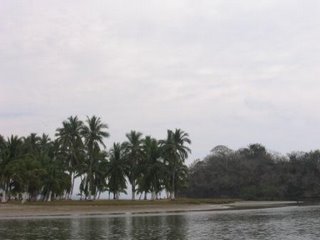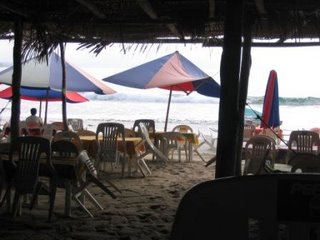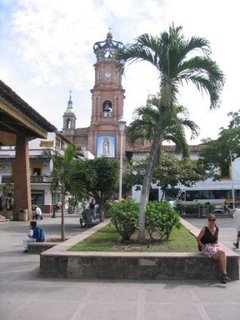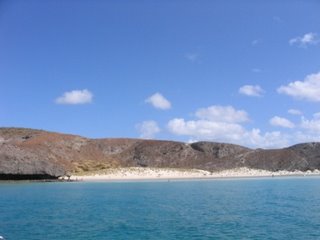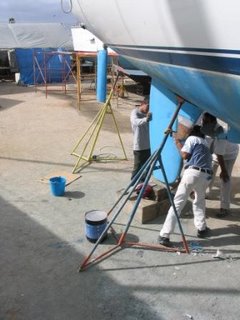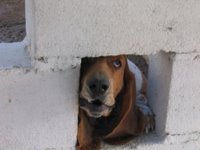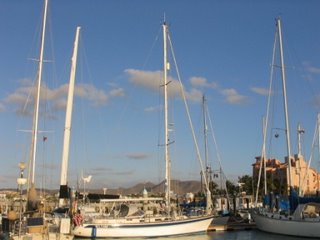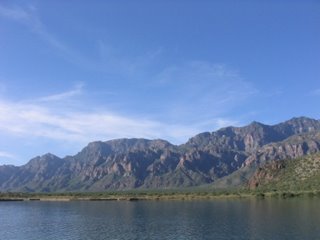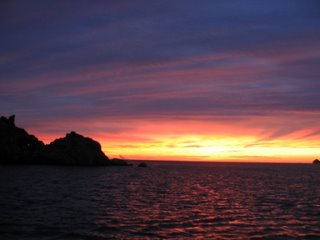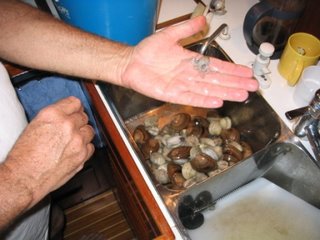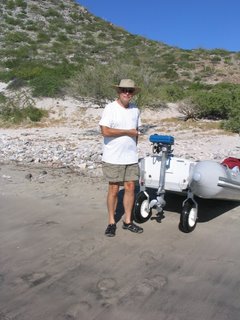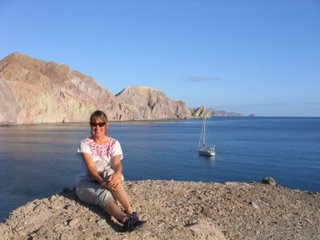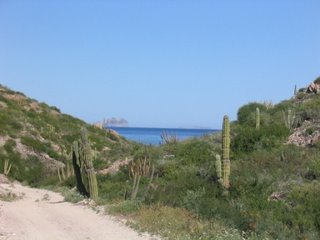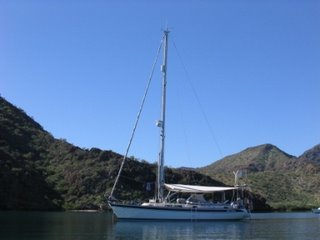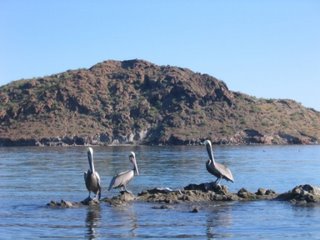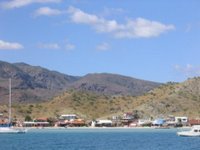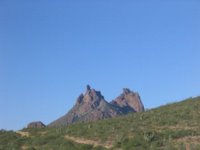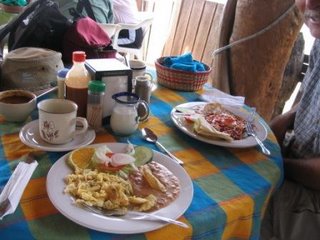
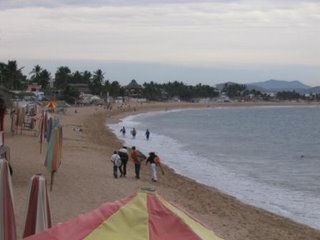
We left Bahia Tenacatita Monday, Jan. 22, in 10-15k NW winds (finally) and did a chicken jybe in 6' seas to head south. It went off without a hitch.
We entered Bahia Navidad (20 miles north of Manzanillo) less than three hours later, saw the channel to Barra Navidad, but turned left and anchored in the beach harbor of Melaque, situated in the same bay. The bay is surrounded by beach with waves starting small in Melaque and growing to giants by the end at Barra (so named because it is built on a sandbar). Hotels (bungalows) and palapa cafes cater to Canadians and other norte Americanos. Street dogs bathe in the sun on the beach with everyone else. The cerveza, huevos rancheros, and view are mui bueno.
Mexicans vacation here and the kids have so much fun playing on the beach and in the waves. There are tables to sit at and strolling native indians sell their crafts or others sell pineapple drinks and mango or bread treats.
We met up with Howard and Gail and their dog Britta (Portuguese Water Dog who climbed our ladder to board Beltane) on Anu, who Steve met last year, and they shared a bottle of champagne with us for my birthday on the 25th. Thanks for the native handcrafted bowl. Steve liked it so much he bought 5 plates today from the same lady who painted that one.
Bob at Hogin Sails stitched up our canvas dodger. Now we just have to navigate the narrow channel to the fuel dock before heading north again.
